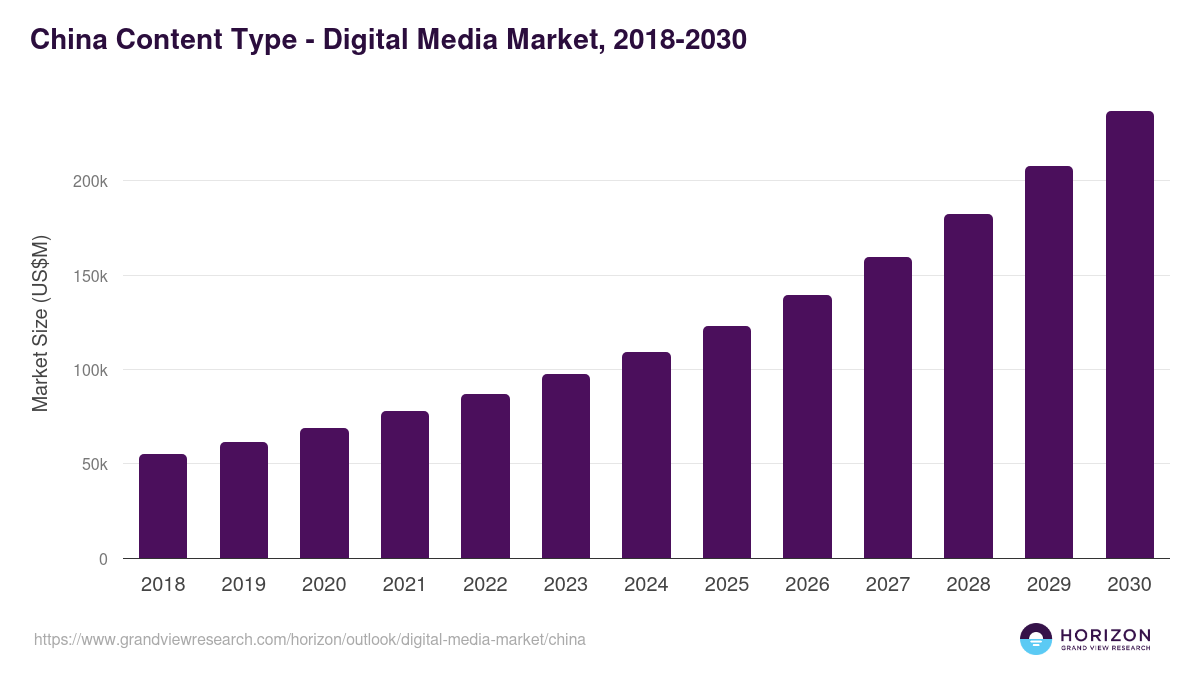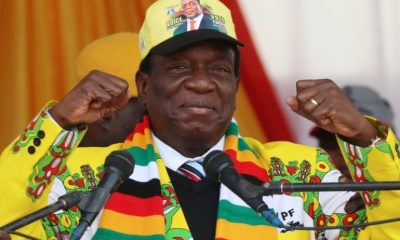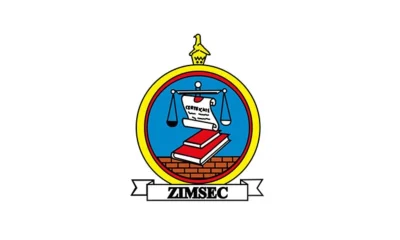Uncategorized
Young Warriors Step Up Preparations Ahead of COSAFA Qualifiers

The Zimbabwe Under-17 men’s football team, the Young Warriors, are intensifying preparations for the upcoming 2026 TotalEnergies CAF Under-17 Africa Cup of Nations COSAFA Qualifiers, which the country will host from September 11 to 20.
Assistant Coach Backlyfield Chivenga said the squad has shown steady progress since entering camp, with the technical team now focusing on refining quality and tactical awareness after trimming the provisional list.
“We were screening the boys and bringing them into a reasonable number by quality. We are left with quite a good number to work with, and we’ve seen progress from day one to now. There’s evidence of improvement in terms of how we play,” Chivenga told reporters.
The Young Warriors have played three friendly matches against strong opposition, which Chivenga described as crucial in testing the squad’s readiness and exposing areas for further improvement.
“These matches gave us a picture of where we are in terms of our style of play. We will keep on working on our defensive shape and our attacking shape,” he said. “We are also trying to bring the boys into a friendly working environment, making them understand that it’s not about individuals but about representing the nation.”
The technical team has placed emphasis on instilling discipline, unity, and tactical maturity — qualities they believe are essential for the squad to challenge for honours in the regional competition.
Zimbabwe will be banking on home advantage as hosts, with expectations high that the Young Warriors can finally break their qualification drought. The COSAFA tournament not only crowns the region’s best but also serves as the pathway to the CAF U-17 Africa Cup of Nations.
The Young Warriors last reached the continental finals in 2007 in Togo. Since then, they have consistently fallen short in regional qualifiers, often exiting at the group stages. Hosting the 2026 edition offers a chance to revive their fortunes and re-establish Zimbabwe’s presence in youth football.
“If we continue with this trajectory, we will get to the tournament prepared to get the results,” Chivenga said, adding that confidence is growing within the squad.
The Young Warriors are set to open their COSAFA campaign in Harare, with fixtures expected to be announced in the coming days.
ALSO READ : Warriors Fall to Benin in World Cup Qualifier
Uncategorized
Government to Begin Rolling Out Legal Reforms to Cut Business Costs

The Government will next week start formalising a raft of new measures designed to ease the cost of doing business in Zimbabwe, with several Statutory Instruments (SIs) set to be gazetted across key ministries.
According to Treasury, the legal process will be implemented in phases to ensure a smooth transition as ministries adjust their fees and procedures in line with the broader national reforms.
Finance, Economic Development and Investment Promotion Minister, Professor Mthuli Ncube, confirmed the development following the conclusion of pre budget consultations held in Bulawayo this week.
“From next week, you will begin to see ministries publishing new regulations and fees through Statutory Instruments, in line with the policy measures I recently announced,” said Professor Ncube. “Some of these provisions will also be incorporated into the upcoming Finance Act. The implementation will be gradual, but we are committed to making it work across all major sectors.”
He said the next phase of the reforms will focus on the energy sector, following progress already made in agriculture, retail, transport, and tourism.
Treasury insists the measures are backed by sound fiscal and monetary policies that have strengthened the local currency and improved the business climate.
“We believe our economic fundamentals are strong. The economy is projected to expand by 6.6 percent this year and by 5 percent next year, placing Zimbabwe among the fastest growing economies in the region,” Professor Ncube added. “These results reflect our commitment to fiscal discipline, monetary stability, and sustainable development.”
The Government expects the upcoming legal instruments to create a more predictable regulatory environment, attract investment, and support ongoing efforts to build a competitive, growth driven economy.
Uncategorized
Lupane Set For Digital Boost as Fibre Optic Projects Nears Completion

Lupane District in Matabeleland North is on the verge of a major digital breakthrough, with fibre optic connectivity expected to reach the area by the end of the year.
The project, being spearheaded by TelOne, forms part of a nationwide programme to strengthen Zimbabwe’s digital infrastructure and connect remote areas to high-speed internet.
According to TelOne managing director, Engineer Lawrence Nkala, the company has already laid about 150 kilometres of fibre along the Bulawayo–Lupane route.
“We have now reached Lupane and plan to light up the district and surrounding communities soon,” Nkala said. “Our goal is to complete the remaining stretch to Victoria Falls as we mobilise more resources. This link is vital because it connects Bulawayo to the tourism capital and extends further into Zambia and Namibia. We are confident that by year-end, Lupane will be online.”
The Bulawayo, Lupane, Victoria Falls fibre link is part of a USD15 million investment, with more than USD3 million already used on trenching and cable laying. Once complete, the network will deliver internet speeds of up to 800 gigabits per second, among the highest in the country.
The initiative is expected to unlock new economic and social opportunities for the region, particularly in business, education, and communication.
“Fast and reliable internet will boost e-commerce and improve business efficiency. Transactions will be smoother, and network disruptions will be a thing of the past,” said one local resident.
Another community member added: “Access to affordable high-speed internet will transform education here. Learners will benefit from e-learning just like their counterparts in cities, and that could improve pass rates.”
The development also complements Zimbabwe’s recently launched National Artificial Intelligence Strategy (2026–2030), which aims to shift the country towards a knowledge-based economy, promote cultural values rooted in Unhu/Ubuntu, and use AI to bridge development gaps between urban and rural areas.
Once complete, the fibre project is expected to position Lupane as a key digital hub in Matabeleland North and further cement its role as the provincial capital.
Uncategorized
Why Zimbabwe Should Follow China’s Lead in Media Development

Abel Karowangoro, recently in Beijing, China
The media plays a vital role in shaping national identity, promoting culture, and recording history. China stands out as a country that has used its media systems not only as a channel for information dissemination but also as a tool for nation-building.
Zimbabwe can draw valuable lessons from China’s model to strengthen its own media landscape and ensure that the nation’s story is told by its own people.
China’s media landscape operates through a well-organised four-tier system that integrates communication across national, provincial, municipal, and local levels. At the national level, major outlets such as the Xinhua News Agency and China Central Television (CCTV) function as the authoritative voices of the state, disseminating government policies, cultural values, and national achievements to both domestic and international audiences.
Provincial and municipal media serve as bridges between the central government and regional communities, focusing on local development, economic initiatives, and the distinctive characteristics of each province, while maintaining alignment with national objectives.
At the grassroots, local and community media outlets capture the everyday lives of citizens, safeguarding local traditions, dialects, and cultural practices that contribute to China’s diverse social fabric.
Collectively, this tiered structure ensures that communication flows effectively from the centre to the periphery, allowing every segment of society to be represented.
Through print, broadcast, and digital platforms, China’s media system not only fosters internal cohesion but also enhances the nation’s image on the global stage by promoting its culture, values, and developmental narrative.
Lessons for Zimbabwe
Zimbabwe, too, has a rich history, vibrant culture, and abundant natural resources.
However, the local media often focuses on political contestation and conflict rather than nation-building. This imbalance can weaken the collective identity and overshadow the country’s achievements and heritage.
Minister of Information, Publicity and Broadcasting Services, Dr Jenfan Muswere, said Zimbabwe needs to embrace communication development across all sectors.
“Media should not only inform but also educate, empower, and inspire pride in being Zimbabwean,” He said.

Our ancestors built a legacy of resilience, innovation, and cultural depth, from the Great Zimbabwe civilisation to the liberation struggle.
“It is the responsibility of today’s media to preserve and promote these stories.
If we do not write our own history, others will write it for us and often from perspectives that do not reflect our true identity.”
Sharpening Skills and Building Home-Grown Media Capacity
During an engagement by Professor Cheng from Communication University of China, he emphasised that developing countries must embrace home-grown media applications and technologies in order to encourage effective communication.

He noted that while the process may be difficult at first, persistence and innovation will lead to growth.
“That’s how China’s media started,” he said, encouraging nations like Zimbabwe to develop their own communication systems step by step.
Echoing this sentiment, Professor Wang Yao urged developing countries to come up with innovative ways of writing their stories, focusing on cultural exchange and local content development in every sector that forms the backbone of the nation.
Professor Cheng’s and Professor Wang’s words are a reminder that media development is not just about technology; it’s about sharpening skills, media skills, and mastering the art of information dissemination.
True communication is not about creating passive viewers or followers, but about ensuring that users actively comprehend and engage with the information shared.
It’s about communicating seasoned, well-researched, and meaningful information that builds trust and understanding.
China Champions Cross-Continental Media Collaboration
The theoretical framework provided by Chinese academics is powerfully reinforced by concrete government-led action.
Beijing recently became a hub of cross-continental dialogue as the Chinese government hosted the Seminar on Regional Online Media for Belt and Road Countries.
Organised by the National Radio and Television Administration (NRTA) and executed with the China Broadcasting International Cooperation (CBIC), the event drew thirty-two media professionals from Belt and Road Initiative (BRI) countries, including a delegation of 9 media professionals from Zimbabwe.

Throughout the 14-day seminar, participants engaged in vibrant discussions and shared their diverse voices and experiences.
A key highlight was a study tour to state-of-the-art institutions that have embraced cutting-edge technology in media production, providing the delegates with invaluable, hands-on insight into the future of the industry.
Ms Zhou Jinhong, Director-General of the International Cooperation Department at NRTA, set a visionary tone.
“All we come from different countries and different regions, but we are united by the BRI,” she declared, framing the seminar as a platform for deepening audiovisual and broadcast ties.
She highlighted initiatives like the China-Africa Broadcast and Audiovisual Cooperation Innovation Program, designed to co-create content that resonates across borders.
Acknowledging the challenges of the digital age, Ms Zhou said, “new tech, artificial intelligence, and big data are increasingly posing challenges to media… We are waiting to learn to communicate and share experiences.”
Her call for depth learning and investment in skills was a direct invitation for collaboration.
Mr Xiong Zhihui, Chairman of CBIC, underscored this mission.
“The aim is to build important platforms, sharing experiences—countries have accumulated various experiences,” he said.
He outlined practical platforms for capacity building, merging traditional and new media, and invited professionals to help with skills transfer, emphasising that “the future of the media is in this between countries.”
This high-level seminar is a clear signal: China is ready for collaboration. It is actively creating frameworks and pouring resources into helping developing nations, like Zimbabwe, build resilient, modern media ecosystems.
The focus is on a two-way exchange, fostering a media future rooted in mutual benefit and shared prosperity.
Strengthening Community Media
For Zimbabwe, the path forward is clear. We must actively engage with these opportunities for cooperation while fiercely nurturing our own talent and content. It is imperative that Zimbabwe utilises these platforms to speak its local richness.
This is not a task solely for major state-owned institutions like Zimpapers and ZBC; it is a responsibility for all media institutions. It is their right and their duty to write the nation’s story.
Community radios, online startups, and independent production houses have a crucial role to play in telling the Zimbabwean story.
Each region, be it Matabeleland, Manicaland, Masvingo, or Mashonaland, has unique traditions, languages, and histories that deserve recognition. By focusing on local heritage, all media can help preserve culture while contributing to national unity.
Moreover, the media should highlight developmental initiatives, innovations, and cultural events that uplift communities. Positive storytelling does not mean ignoring challenges; it means balancing criticism with constructive dialogue and celebrating progress.
China’s success in building a powerful media system that reflects its culture and history offers important lessons for Zimbabwe. More importantly, China has demonstrated a genuine commitment to sharing this expertise through concrete platforms for cooperation.
A strong, independent, yet patriotic media can be the foundation of national pride and unity.
Zimbabwe’s journalists, broadcasters, and writers must now take up the responsibility to tell the nation’s story truthfully and positively, leveraging both our own innovation and the collaborative bridges being built.
Because if we do not write our history, no one else will do it for us, and certainly not in the way we would want it to be told.
-

 Current Affairs1 week ago
Current Affairs1 week agoOperation restore order
-

 Crime and Courts2 months ago
Crime and Courts2 months agoMasasi High School Abuse Scandal Sparks Public Outcry
-

 Crime and Courts2 months ago
Crime and Courts2 months agoKuwadzana Man Jailed for Reckless Driving and Driving Without a Licence
-

 Current Affairs3 months ago
Current Affairs3 months agoMunhumutapa Day: Zimbabwe’s Newest Public Holiday Set for Annual Observance
-

 Current Affairs4 months ago
Current Affairs4 months agoBreaking: ZIMSEC June 2025 Exam Results Now Available Online
-

 Current Affairs1 month ago
Current Affairs1 month agoBREAKING NEWS: ZANU PF Director General Ezekiel Zabanyana Fired
-

 Current Affairs3 months ago
Current Affairs3 months agoGovernment Bans Tinted Car Windows in Nationwide Crime Crackdown
-

 Current Affairs2 months ago
Current Affairs2 months agoExposed: Harare GynecologistChirume Accused of Negligence, Extortion, and Abuse



